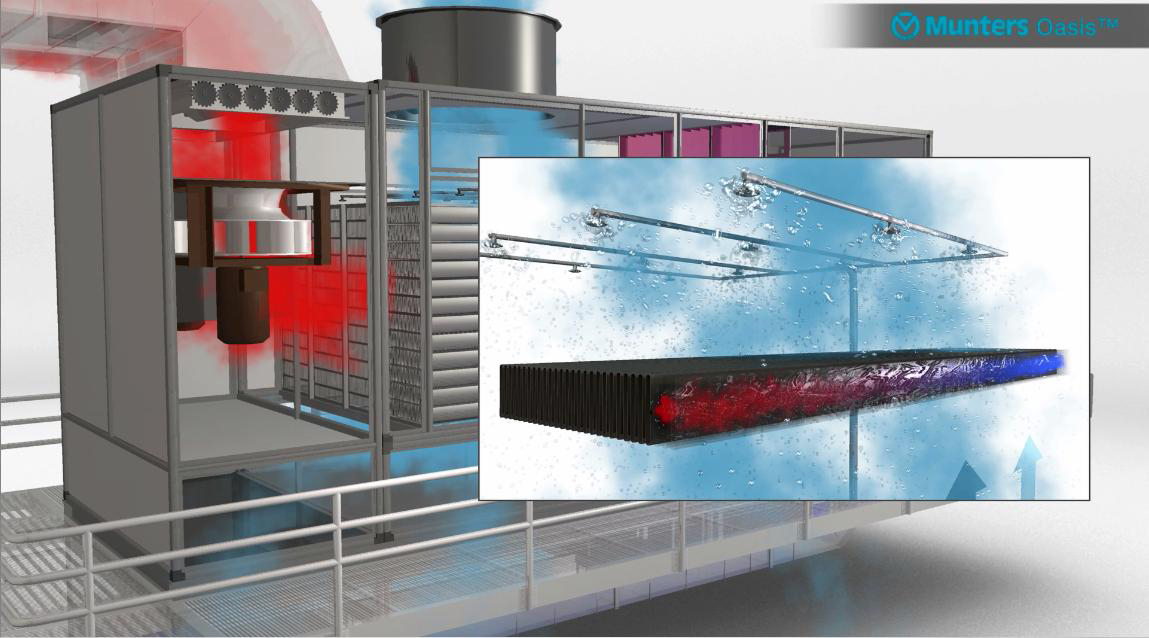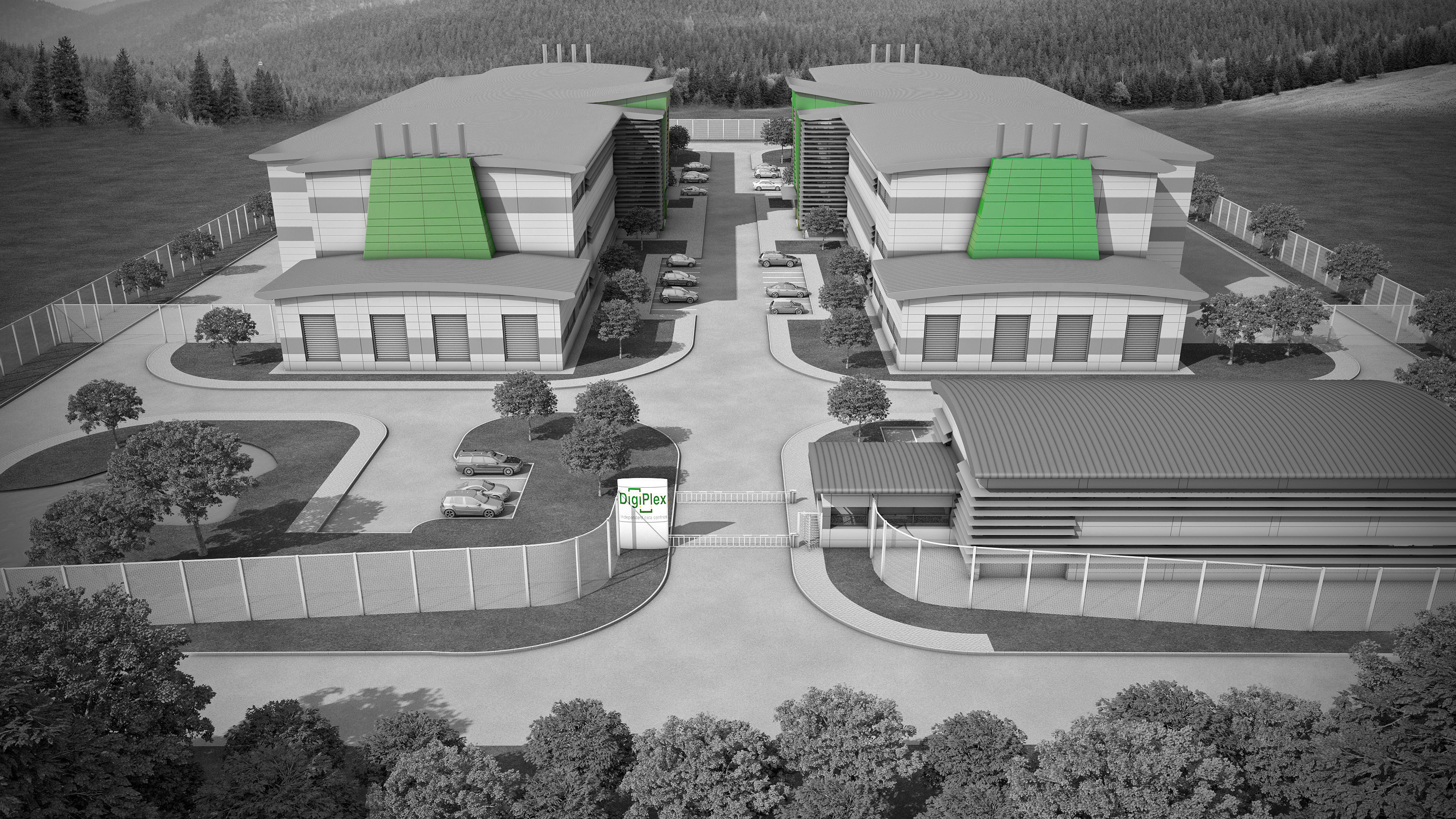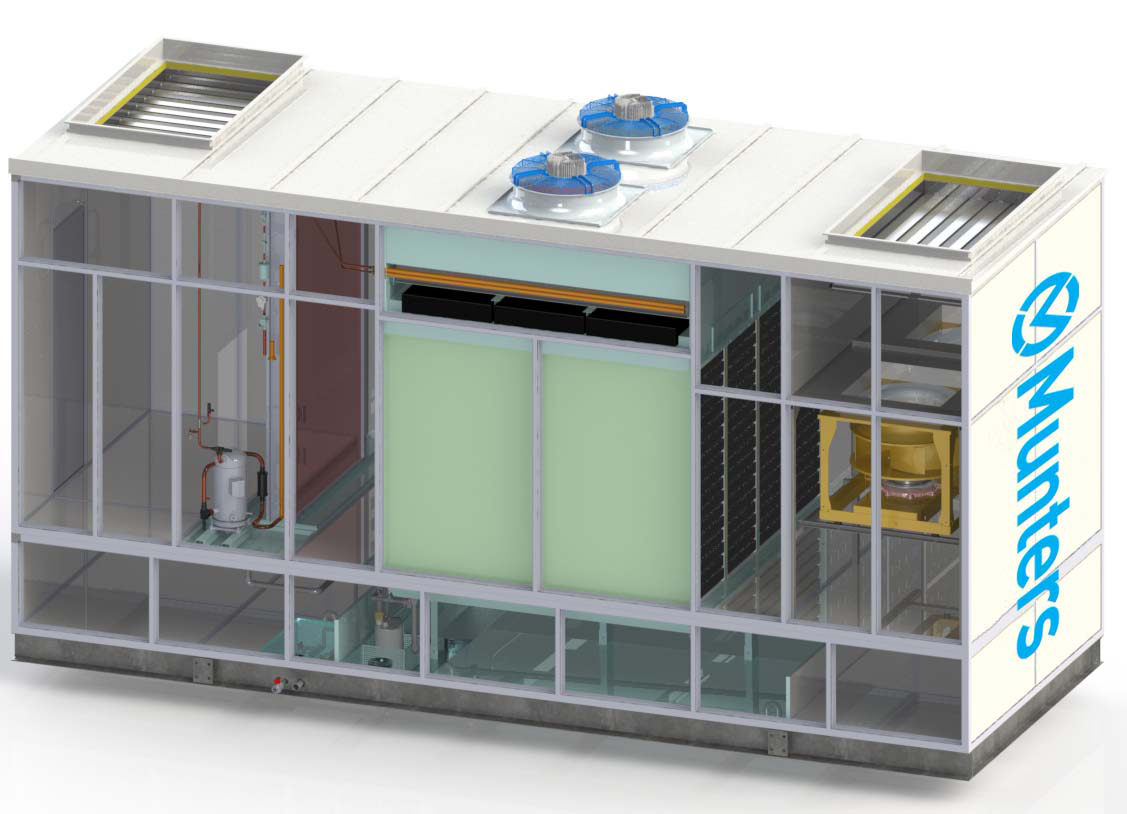DigiPlex is a Nordic leader for sustainable, scalable and secure data centers and one of Europe’s longest-standing operators. Their Fetsund campus, near Oslo, provides reliable, energy-efficient data storage and relies on Munters Oasis indirect evaporative cooling systems for energy savings.
Informações gerais
- Ideal data hall climate and PUE at 1.12 and cooling pPUE 1.06
- DC air fully separated from outdoor air
- Lower capital refrigeration and switchgear costs
- 65% lower energy than common free-cooling solutions
- Potential to use rainwater harvesting
The Munters solution
Munters innovative Oasis is at the heart of DigiPlex’s Air-to-Air (A2A) cooling system, which is designed to provide an ultra-low PUE of 1.12. DigiPlex and Munters award-winning approach uses natural free cooling to deliver substantial environmental benefits. Fifty-two Oasis systems reduce energy consumption and provide a secure, sustainable data hall climate. A data center giant The facility is capable of cooling over 10MW of IT power for customers, including the large Norwegian technology company Evry. The DigiPlex Fetsund data center has the capacity to operate 25,000 servers providing modern, high-power data center services. The data halls extend to 4,200 square meters of white technical space, creating individual modules to fit customer requirements. The system explained Munters Oasis capitalizes on the cooler climates of Northern Europe to deliver natural, sustainable free cooling and economic benefits compared to traditional cooling technology. Oasis reduces by half the amount of energy used to keep computers and servers at 75°F (24°C), an ideal working temperature, which lowers the power cost for DigiPlex customers. The DigiPlex cooling system utilizes two separate airstreams. One airstream draws outdoor fresh air into Munters Oasis and passes it over Munters’ patented indirect evaporative polymer tube heat exchanger. The exterior of the elliptical tube heat exchanger is wetted to maximize the surface area for heat rejection and provides effective indirect evaporative cooling. After passing over the wet exterior tube surfaces of the heat exchanger, the outdoor air is expelled to the atmosphere. The other airstream draws air from the data center white space hot aisle and passes it through the inside of the heat exchanger tubes, where evaporative heat transfer from the exterior wetted surfaces cools the data center hot aisle air and passes it back into the under-floor void of the data center cool aisles. This gives a continuous and stable operation securing a constant temperature without mechanical cooling for the entire year. Because the data hall air is recirculated and cooled with indirect evaporative cooling, no outdoor air is introduced into the data center by the Oasis. The indirect evaporative cooling system requires one-third of the water flow rate of conventional economizer systems. Munters Oasis fully separates the air flows, eliminating risk of data hall contamination and humidity issues that could cause server corrosion, and it is a low-cost system to maintain. A word from the client Greg McCulloch, DigiPlex COO comments, “Working closely with Munters to develop the A2A system has helped us to develop a cooling system that really sets our data centers apart. Driving forward energy efficiency in our industry is a major focus for us, and this system halves the amount of energy used to keep our servers working at an ideal temperature. This not only helps save our customers thousands of pounds in energy costs but also ensures that our facilities are among the most sustainable in the sector.” Munters’ dedicated data center team worked closely with DigiPlex to develop their modular A2A cooling system, and Oasis helps provide annual cost savings of 40% and a total energy consumption reduction of 65%, compared to common high-efficiency free-cooling solutions.
Informações gerais
- Ideal data hall climate and PUE at 1.12 and cooling pPUE 1.06
- DC air fully separated from outdoor air
- Lower capital refrigeration and switchgear costs
- 65% lower energy than common free-cooling solutions
- Potential to use rainwater harvesting




